Forehead wrinkles - causes, treatment, prevention
While this is a normal effect of passing time, there are ways to visually reduce it.


Learn more about our editorial process
.

Learn more about our editorial process
.

Learn more about our editorial process
.

Learn more about our editorial process
.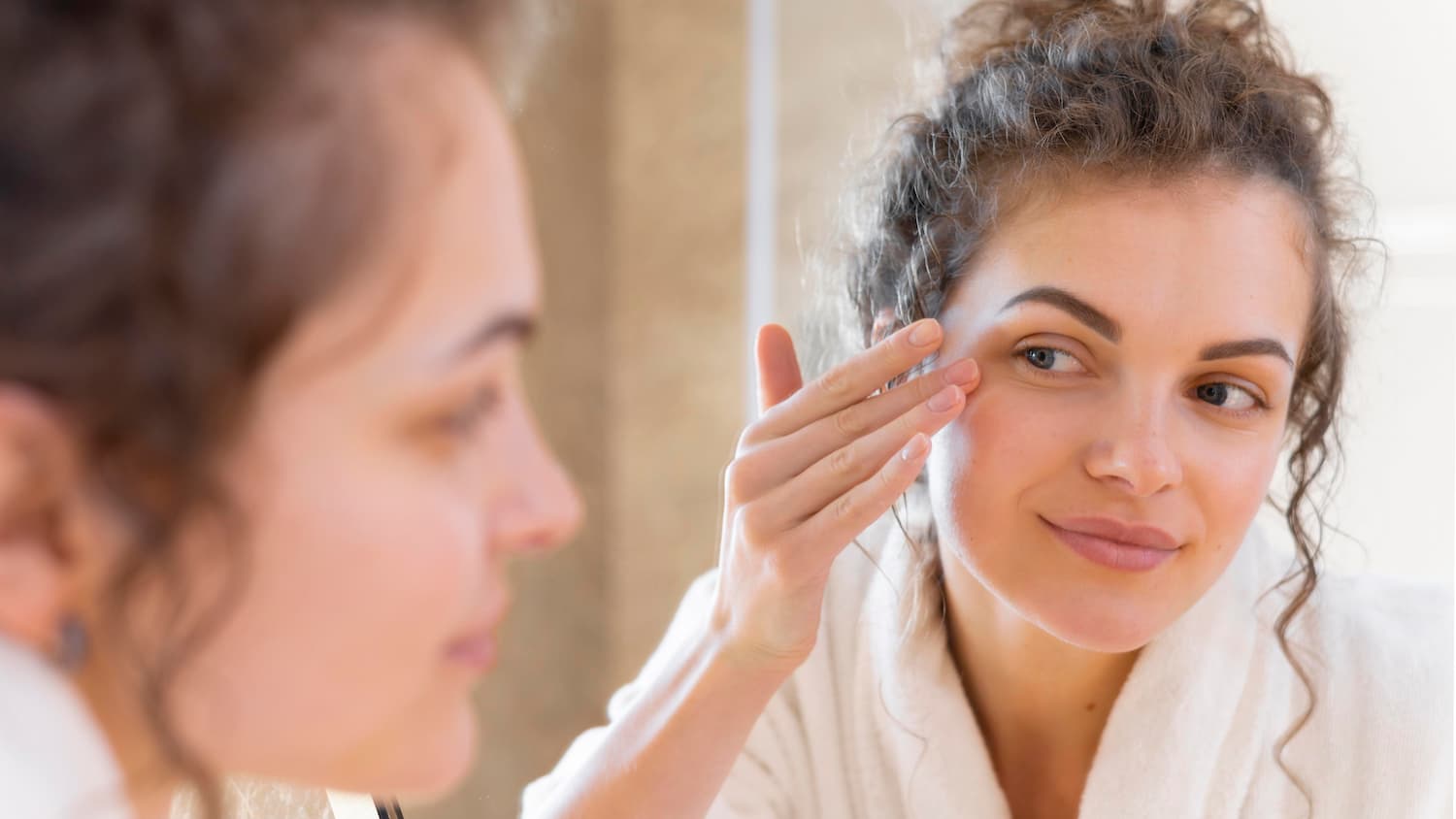
Why you can trust us
Articles on Natu.Care are written based on scientific research, data from government websites and other reliable sources. The texts are written in cooperation with doctors, nutritionists and other health and beauty experts. Articles are reviewed before publication and during significant updates.
.Learn more about our editorial process
.Information about advertisements
Content on Natu.Care may contain links to products from the sale of which we may receive a commission. When creating content, we adhere to high editorial standards and take care to be objective about the products discussed. The presence of affiliate links is not dictated by our partners, and we select the products we review ourselves completely independently.
.Learn more about our terms and Conditions
.At first you only notice them. Even though you think otherwise. Forehead wrinkles can be a source of complexes. No wonder - the forehead is a large area on the face and well... it catches the eye.
That's why, in the harsh artificial light of the bathroom, it's easy to spot the first skin bumps and furrows crossing it. And even though others aren't looking at you from a distance of 5 centimetres (like you're watching your skin in the mirror), it's no wonder you want your forehead to be smooth.
The skin's smoothness is not a problem.
From this article you will learn:
- What wrinkles are most likely to appear on the forehead.
- What factors accelerate the appearance of wrinkles.
- What factors accelerate skin ageing. .
- What methods will help you in the fight against wrinkles.
- Which supplements can help you fight wrinkles.
- Which dietary supplements will best support the condition of your skin. .

Sprawdź, za co pokochały go tysiące klientek Kolagen Premium (5000 mg) mango-marakuja -15% z kodem BLOG15
Natu.Care Kolagen Premium 5000 mg, mango-marakuja
Natu.Care Kolagen Premium dla zdrowia stawów, skóry, paznokci i włosów. Najlepsza przyswajalność. Optymalna dawka 5 000 lub 10 000 mg. Przebadany przez niezależne laboratorium.
Zobacz więcej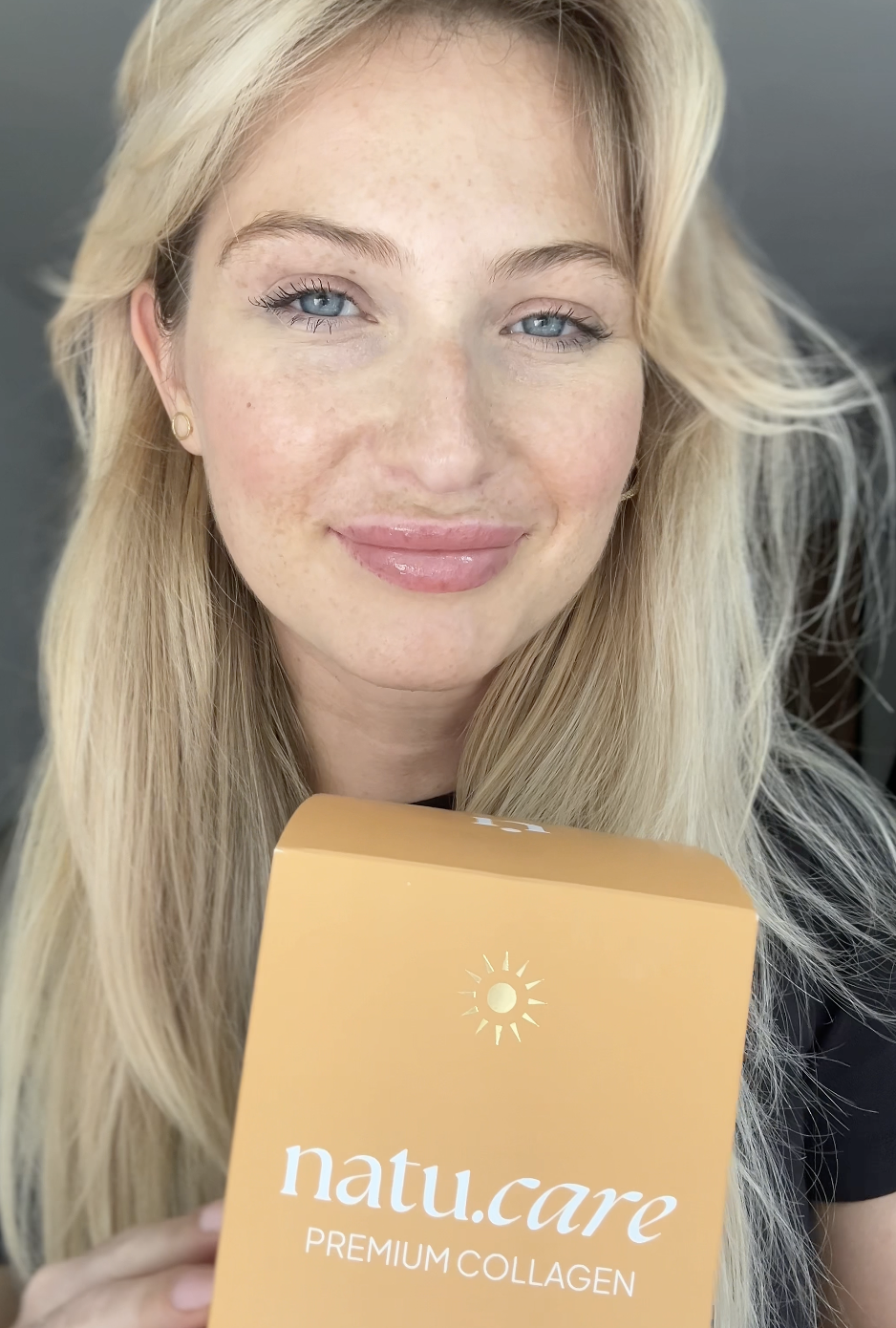
Wybrałam kolagen Natu.Care, ponieważ miał super opinie – a to było dla mnie bardzo ważne! Odkąd go stosuję, moja skóra znacznie się poprawiła i jest nawilżona, a na głowie pojawiły się nowe "baby hair".@Kasia S.
See also:
.
What kind of wrinkles occur on the forehead?
.
The forehead is a peculiar area of the face - there isn't much fatty tissue on it, yet you move it around a lot, although you don't always realise it. This means that, in addition to the eye area, it is usually the forehead that develops the first wrinkles.
At first, these are fine hollows and folds of skin in the form of visible lines, which can deepen and become more permanent over timeand.
.
Mimic wrinkles on the forehead
.
The cause of forehead wrinkles, among other things, is facial expressions. The skin in this area works every time you raise or pull down your eyebrows, get surprised or intensely confused about something, and even when you laugh or get angry.
The skin on the forehead is a part of your facial expression.
In people with rich facial expressions, forehead wrinkles can already appear before the age of 30. This is because after the 25th birthday, the body's natural production of collagen, elastin and hyaluronic acid decreases. Collagen fibres and elastin fibres, which are the specific scaffolding of the skin, degrade and the complexion becomes increasingly flabby, loses firmness and elasticityand.
.
Vertical wrinkles on the forehead
.
The vertical lines on the forehead usually occur between the eyebrows - just above the root of the nose. They are also called left wrinkle. They accompany people with a tendency to pull their eyebrows together. They can also appear in those who wear ill-fitting corrective eyeglasses or who do not use sunglasses and are often in the sun. Both situations favour squinting, which sometimes also entails the eyebrow pulling reflex.
For many people, the lion's-eye wrinkle is a complex, as it can give the face an angry or harsh expression, quite contrary to the intentions of its bearer.
Longitudinal forehead wrinkles
.
The horizontal lines that run the entire length of the forehead are perhaps the most common type of wrinkle to appear on the forehead. They can also be quite problematic, as foundations, powders or BB creams love to collect in them. This, in turn, accentuates the visibility of these wrinkles.
What promotes wrinkles on the forehead?
.
In addition to the wrinkling of the skin due to the movement of the facial muscles, several other factors contribute to the formation of wrinkles. Fortunately, most of these are within your control.
The formation of wrinkles is accelerated byand:
- Inadequate skin hydration, .
- Inadequate skin care, .
- exposure to sunlight without using UV filters, .
- smoking, .
- abuse of alcohol, .
- insufficient sleep, .
- diet poor in vitamins, macronutrients and micronutrients necessary for proper skin function, .
- genetic predisposition, .
As you can see, proper skin care and attention to a hygienic lifestyle can help you fight wrinkles. In particular, it can protect you from their early formation and deepening.
How to get rid of wrinkles on the forehead
.
But what to do about the ones that have already appeared? The earlier you act, the better. Facial wrinkles will start to become more permanent over time, and they will also be influenced by... gravity, which inexorably pulls your skin down, thereby deepening the existing groovesand.
Prevention of delaying the appearance of wrinkles should start from the age of 25..
 .
.
Marta Majszyk-Swiatek cosmetologist, technologist and Safety Assessor
Massage for forehead wrinkles
.
To improve the condition of the skin on your forehead, it is a good idea to regularly perform a simple facial massage. Your fingers are enough for this, but you can also use accessories such as a stone roller or a special plate.
Massage the skin from the eyebrows towards the hairline, then bend your index and middle finger and with the knuckles of your fingers (or the roller) pull at the eyebrow in such a way as to have it between your fingers.
Massage will help to improve micro-circulation in the skin, making it more oxygenated and nourished. It will also help get rid of lymphatic build-up that makes the face look puffyand.
It will also help to relax and loosen facial muscles that may be tense from chronic stress, for example.
.
You can also take advantage of the professional massages available in cosmetic surgeries, e.g. the kobido massage, facial yoga or even the use of facial tumescence..
 .
.
Marta Majszyk-Swiatek cosmetologist, technologist and Safety Assessor
See also:
.
Creams and sera for forehead wrinkles
.
The best anti-wrinkle cosmetic is the right cream with sunscreen..
 .
.
Marta Majszyk-Swiatek cosmetologist, technologist and Safety Assessor
Manufacturers of anti-wrinkle cosmetics extol the miraculous properties of their products. You are usually persuaded of their efficacy in advertisements by twenty-something beautiful models. However, the truth is that most creams and serums only work on the epidermal layer. What does this mean?
Creams and serums anti-wrinkle creams have their greatest effectiveness in... preventing wrinkles. They are definitely your allies in the fight for beautiful skin, but don't expect them to reverse the effects of passing time - they can only gently diminish them.
.
In your daily skincare regimen, it is a good idea to focus first and foremost on proper moisturisation, nourishing the skin and taking care of the hydrolipid mantle. As you already know, wrinkles develop much faster and are more visible on dry and dehydrated skinand. Therefore, properly selected hydrating cosmetics should become a permanent part of your daily skin care.
What ingredients to look for in moisturising creams and serumsand?
- Hyaluronic acid, .
- vitamin E (e.g. in the form of tocopherol), .
- allantoin, .
- urea, .
- D-panthenol (vitamin B5), .
- lactic acid, .
- glycerol .
- amino acids, .
- squalate, .
- NMF, .
Ceramides are another ingredient worth your attention. They help to seal the skin's natural protective barrier. In doing so, they also prevent excessive water loss from the epidermisand.
If you care about the actual anti-wrinkle effect of a cream or serum, one of the most effective ingredients the cosmetic market has to offer is retinol. It is a derivative of vitamin A that can initiate its remodelling processesand.
Retinol treatment can help you reduce the appearance of shallow wrinkles, but don't expect it to work like the fillers in cosmetic surgeries. However, the ingredient will certainly have a positive effect on the state of your complexion.
Retinol treatment can help to reduce the appearance of shallow wrinkles.
The last cream that is good to have in your make-up bag (and to use even in winter) is cream with UV filter. Although it won't affect wrinkles that already exist, it will help protect you from the negative effects of the sun's radiation. In addition to wrinkles, it will also prevent sunburn and reduce the risk of skin cancerand.
See also:
.
Botox for forehead wrinkles
.
Botox is a neurotoxin (botulinum toxin) that is administered by specialists by injection into specific areas of the face. Its action is to paralyse the muscles at the site of administration, making the face more immobile. The reduced facial expression instead contributes to the skin not wrinkling and, as a result, wrinkles do not deepenand.
.
Botox is primarily effective on facial wrinkles, so it will work well on those appearing on the forehead. However, it will fill them to a very limited extent, so if your forehead is punctuated by deep furrows, you may wish to supplement Botox treatments with injections of a filler - usually hyaluronic acid.
It is worth mentioning that this treatment is not a one-off and must be repeated in order to maintain the effects..
 .
.
Marta Majszyk-Swiatek cosmetologist, technologist and Safety Assessor
Taping for forehead wrinkles
.
Taping, or rather kinesiotaping, is a method taken from physiotherapy and sports medicine. It involves applying special tapes to the appropriate areas, which are mainly designed to relax muscles, fascias and also to promote lymphatic drainage.
How it can help with wrinkles.
How can this help in caring for a youthful-looking complexion? Relaxed muscles also mean less skin tension and wrinklingand. On the forehead, taping is mainly applied to the muscles responsible for the formation of the so-called lion's wrinkle.
Does it work? Opinions are divided. So before you decide to invest in special taping, you need to be aware of its limitations. Although they are advertised as a 'non-invasive lift', with them you will not achieve the effect that a scalpel provides.
They are a great way to improve your appearance.
Fans of this method praise it above all for the feeling of relaxation and getting rid of any minor tension from the face, which they were often not even aware of. You know that feeling? Me too - it's super pleasant!
However, the visual effects you can achieve with this method will not last. This is because taping is best applied on a regular basis.
Treatments for forehead wrinkles
.
Cosmetology and aesthetic medicine offer a great many solutions that can help in the fight against forehead wrinkles. It also has to be given up that when it comes to getting rid of deep furrows, it is the invasive treatments that are most effective.
Aesthetic and cosmetic medicine treatments that can help eliminate forehead wrinklesand:
- Needle and micro-needle mesotherapy and tissue stimulators - in needle mesotherapy, the specialist injects concentrated nutrients, vitamins and peptides using fine needles directly into the skin to promote regeneration and improve skin condition. Micro-needle mesotherapy, on the other hand, involves using a special device with micro-needles to gently prick the skin, which stimulates the production of collagen and elastin, improving the firmness and elasticity of the complexion and reducing wrinkles and scarring.
- Fractional laser - is a popular method for reducing forehead wrinkles. This laser works by generating microscopic damage in the skin, stimulating the healing process and the production of new collagen fibres. When new collagen is created, the skin becomes firmer and more elastic, helping to reduce the appearance of wrinkles. However, it is worth bearing in mind that full results may require several sessions and time for the skin to finally heal. .
- PDO threads (polydioxanone) - are a type of thread used in facelift procedures. They work by stimulating collagen production. When the threads are inserted under the skin, they produce a lifting effect by supporting the tissues. In addition, these threads attract collagen to the area where they are placed, leading to improved firmness and elasticity of the skin.
- Filler injections - A popular substance used to fill wrinkles on the forehead is hyaluronic acid, which helps to hydrate the skin and smooth out furrows. It is also safe and neutral to the body. .
- Botox - Botulinum toxin works by blocking the nerve signals that lead to muscle contraction to help alleviate facial wrinkles on the forehead. It is an effective and relatively safe way to reduce wrinkles, although it too can have side effects. .
- Plastic surgery -for example, a surgical facelift, where the doctor stretches the skin and alters the subcutaneous tissues.
What else to use for forehead wrinkles?
.
In order to enjoy a radiant, youthful-looking complexion, it is worth taking care of the nutrients supplied from within. The basis here will be a balanced diet, full of vitamins, minerals, valuable sources protein and healthy fats.
Good results for improving the appearance of the skin (its elasticity) can also be provided by collagen dietary supplements. Collagen is a protein that is the basic building block of the skin, but its natural production in the body starts to decline after the age of 25 and this is when the complexion starts to sag. A good quality collagen hydrolysate can help you slow down this process significantly.
Natu.Care Collagen Premium 5000 mg, mango & passion fruit
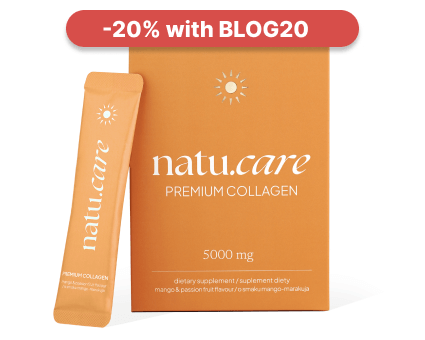
- Collagen content: 5000 mg marine collagen hydrolysate
- Additional active ingredients: vitamin C, low molecular weight hyaluronic acid (and L-theanine and coenzyme Q10 in cocoa flavoured collagen or vitamin A and vitamin E in mango–passion fruit flavoured collagen)
- Form: powder sachets
- Dose: 1 sachet per day
- Sufficient for: 30 days
Product description
Fish collagen from the Natu.Care brand in a dose of 5000 mg, based on certified ingredients of the best quality. Regular supplementation will positively influence the appearance of the skinóry, hairów and nails – they will be rebuilt and strengthened from the inside.
In addition to collagen, which is valuable for health and beauty, it also offers other active ingredients that help to maintain a youthful complexion, shiny hair and strong nails.
The formula contains a sufficient portion of the active ingredient to positively affect joints, the musculoskeletal system and immunity.
Natu.Care Premium Collagen is available in two flavours – Cacao Bloom and Rise&Shine. Both formulas are based on the following active ingredients: marine collagen hydrolysate, wild roseóbud extract and hyaluronic acid.
Additionally, Cacao Bloom contains natural L-theanine, coenzyme Q10 and defatted Dutch cacao. Rise&Shine instead contains vitamin E and vitamin A.
These are the best collagens in the world.
These best fish collagens on the market also rós taste – Cacao Bloom is a treat for chocolate lovers. Rise&Shine will appeal to those whoólike the refreshing taste of mangoófruit and passion fruit.
Pros and cons
Pros:
- Vitamin C supports the body's collagen production, enhancing its effectiveness.
- An effective dose of hyaluronic acid, which additionally supports skin hydration and joint health.
- Fish collagen absorbs 50% better. Additionally, the manufacturer specifies the fish species it is sourced from (Atlantic cod).
- The composition has been tested by the independent and accredited J.S. Hamilton laboratory.
- MSC (Marine Stewardship Council) quality certification, which confirms that the collagen source supports sustainable fishing practices.
Cons:
- None.
Additional information
Natu.Care's fish collagen receives praise for its delicious taste. You won't find the fishy aftertaste that often comes through in other collagens. Plus, you have two tasty flavors to choose from: cocoa and mango-passionfruit.
Active ingredients like coenzyme Q10, hyaluronic acid, and natural L-theanine provide anti-inflammatory and antioxidant benefits while slowing down aging processes.
User review
Super, after about 6 weeks of use, the skin on my face became noticeably firmer. Wonderful taste.
Ania ZalewskaNatu.Care customer
And if you're struggling to get the right amounts of beauty-essential vitamins and nutrients from food, you can help yourself with a good quality dietary supplement. Such formulas will not only support the appearance of your complexion, but also strengthen hair and nails.
Collagen Booster - Glow Stories
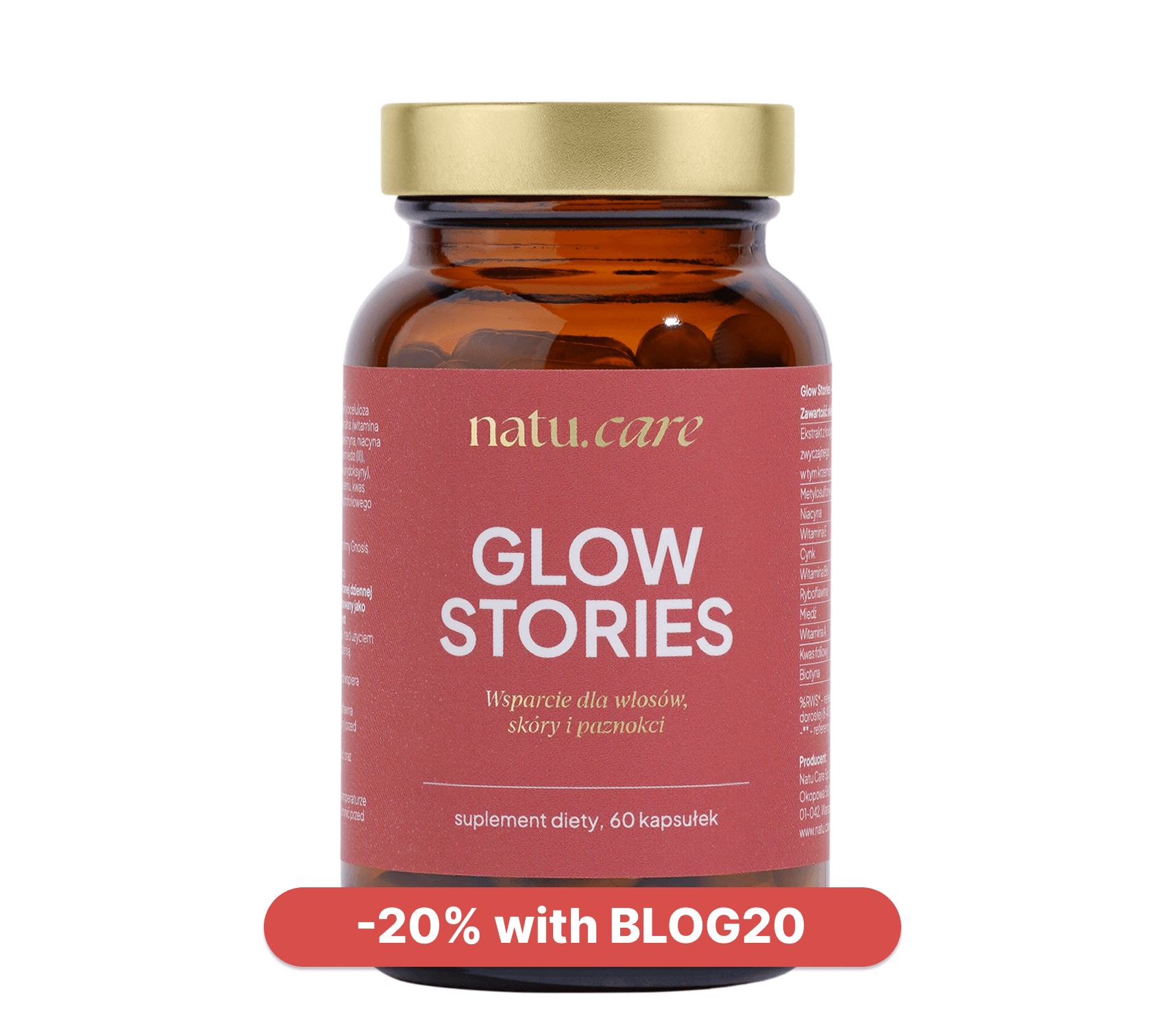
- Active ingredients: bamboo shoot extract, Quatrefolic®, L-Methionine, L-cysteine, vitamin E, vitamin A, niacin (vitamin B3), vitamin B6, vitamin B2 (riboflavin), biotin, zinc, copper
- .
- Form: capsules
- .
- Dose: 1 capsule per day
- .
- Sufficient for: 60 days
- .
Product description
A dietary supplement containing vitamins, minerals and plant extracts thatósupport the skinóhand, hair and nails. The product is especially distinguished by the form of folate – it is Quatrefolic, whichós absorbed very well and is natural.
In addition to valuable vitamins and minerals, such as vitamin A, E, B3, B2 and biotin, the formula contains bamboo shoot extract, whichóry further enhances your beauty.
Pros and cons
A dietary supplement containing vitamins, minerals and plant extracts thatósupport the skinóhand, hair and nails. The product is especially distinguished by the form of folate – it is Quatrefolic, whichós absorbed very well and is natural.
In addition to valuable vitamins and minerals, such as vitamin A, E, B3, B2 and biotin, the formula contains bamboo shoot extract, whichóry further enhances your beauty.
Additional information
A dietary supplement containing vitamins, minerals and plant extracts thatósupport the skinóhand, hair and nails. The product is especially distinguished by the form of folate – it is Quatrefolic, whichós absorbed very well and is natural.
In addition to valuable vitamins and minerals, such as vitamin A, E, B3, B2 and biotin, the formula contains bamboo shoot extract, whichóry further enhances your beauty.
.
Summary
.
- Wrinkles on the forehead are facial wrinkles. They can appear in the form of horizontal furrows or vertical lines above the root of the nose (known as the lion's wrinkle).
- Mimic wrinkles are the most common form of wrinkles.
- Mimic wrinkles are caused by the natural movements of the facial muscles and the processes associated with ageing.
- Dry skin, exposure to sunlight, the use of stimulants, too little sleep and a diet low in nutrients can accelerate the wrinkle formation process.
- To slow the formation of wrinkles on the forehead, keep the skin moisturised and practice facial massage.
- Treatments such as injectable fillers or botulinum toxin can also help in the fight against existing wrinkles.
- For healthy and radiant skin, make sure you eat a nutritious diet. You can also supplement it with dietary supplements tailored to your needs - such as collagen or vitamin formulas. .
FAQ
.What do forehead wrinkles mean?
.Wrinkles on the forehead can be caused by repetitive movements of the facial muscles, especially the frequent frowning of the forehead. These wrinkles are due to the activity of the forehead muscles, which cause the skin in this area to fold. Wrinkles can also be caused by the loss of elastin and collagen in the skin, which is a natural process associated with the passage of time.
How to conceal wrinkles on the forehead
.To reduce the appearance of forehead wrinkles, ensure your skin is properly hydrated. Well-hydrated skin becomes fuller, making wrinkles less visible. This will be especially important when applying foundation or colour cream. These products like to collect in the wrinkles when the skin is dry.
Fringe is another way to hide forehead wrinkles. Sounds mundane? Perhaps, but it is effective. So if you're having a hard time accepting wrinkles on your forehead, but a fringe suits you - go to the hairdresser.
The fringe is another way to hide wrinkles on your forehead.
When do the first forehead wrinkles appear?
.The first forehead wrinkles can appear as early as 25 years of age. This is especially true for people with rich facial expressions and those who are frequently exposed to the sun without proper protection (creams with UV filters).
Is it possible to smooth deep wrinkles on the forehead?
.To smooth out deep forehead wrinkles, you can use aesthetic medicine treatments such as fillers. These can help to smooth out deep furrows by filling in the subcutaneous tissue. However, it is important to have these treatments carried out by an experienced professional to avoid possible complications.
Additionally, regular use of creams with retinoids or hyaluronic acid can help to improve skin elasticity and reduce the appearance of wrinkles. Supporting these measures with a healthy lifestyle, such as a nutritious diet, appropriate facial care and avoiding smoking, can also help improve the appearance of the skin and reduce the appearance of forehead wrinkles.
What vitamins will help with forehead wrinkles?
.Vitamins A, C and E are all effective anti-wrinkle agents. Vitamin C acts as a powerful antioxidant and stimulates collagen production, improving the elasticity of the skin on the forehead. Vitamin E has anti-inflammatory and moisturising effects, promoting skin regeneration and preventing wrinkles. Vitamin A (and its derivatives), on the other hand, stimulates skin remodelling. To obtain the benefits, creams containing these vitamins or dietary supplements can be used.
Will hyaluronic acid help with forehead wrinkles?
.Hyaluronic acid can help reduce forehead wrinkles by hydrating the skin and improving elasticity. Hyaluronic acid in the form of creams, serums or fillers is recommended to achieve the desired results.
This acid works by retaining water in the skin, which gives it smoothness and elasticity, reducing the appearance of wrinkles. However, it is important to remember that the effects of hyaluronic acid are temporary and regular use of products containing this ingredient is necessary to maintain the improvement in the appearance of the skin on the forehead.
Responsible for the use of hyaluronic acid.
It is advisable to consult a dermatologist or cosmetologist for an appropriate opinion and recommendations on the use of hyaluronic acid in the fight against forehead wrinkles.
Why do wrinkles form?
.Wrinkles are mainly caused by the loss of elasticity and moisture in the skin as the years go by. Due to the natural aging process, the production of collagen and elastin, which are responsible for skin firmness and elasticity, decreases.
Additionally, exposure to harmful UV radiation, smoking, stress or an unhealthy diet can accelerate the formation of wrinkles. So it's important to moisturise your skin regularly, use creams with UV filters and avoid bad habits that encourage wrinkle formation.
Care for your skin.
Care for adequate hydration, a healthy diet rich in antioxidants and regular use of anti-wrinkle creams with ingredients that promote collagen and elastin production.
.
Sources
.See all
.Chaudhary, M., Khan, A., & Gupta, M. (n.d.). Skin Ageing: Pathophysiology and Current Market Treatment Approaches. Current Aging Science, 13(1), 22-30.
Cohen, J. L., Rivkin, A., Dayan, S., Shamban, A., Werschler, W. P., Teller, C. F., Kaminer, M. S., Sykes, J. M., Weinkle, S. H., & Garcia, J. K. (2022). Multimodal Facial Aesthetic Treatment on the Appearance of Aging, Social Confidence, and Psychological Well-being: HARMONY Study. Aesthetic Surgery Journal, 42(2), NP115-NP124. https://doi.org/10.1093/asj/sjab114
Ganceviciene, R., Liakou, A. I., Theodoridis, A., Makrantonaki, E., & Zouboulis, C. C. (2012). Skin anti-aging strategies. Dermato-endocrinology, 4(3), 308-319. https://doi.org/10.4161/derm.22804
Hamer, M. A., Pardo, L. M., Jacobs, L. C., Ikram, M. A., Laven, J. S., Kayser, M., Hollestein, L. M., Gunn, D. A., & Nijsten, T. (2017). Lifestyle and Physiological Factors Associated with Facial Wrinkling in Men and Women. Journal of Investigative Dermatology, 137(8), 1692-1699. https://doi.org/10.1016/j.jid.2017.04.002
Khetpal, S., Ghosh, D., & Roostaeian, J. (2023). Innovations in Skin and Soft Tissue Aging-A Systematic Literature Review and Market Analysis of Therapeutics and Associated Outcomes. Aesthetic Plastic Surgery, 47(4), 1609-1622. https://doi.org/10.1007/s00266-023-03322-1
Liu, S., Cong, L., Pongprutthipan, M., Lee, W., Luo, X., Han, X., Li, D., Moon, H.-J., & Wang, H. (2023). Use of LetibotulinumtoxinA for Aesthetic Treatment of Asians: A Consensus. Aesthetic Surgery Journal, 43(11), NP962-NP974. https://doi.org/10.1093/asj/sjad151
Manríquez, J. J., Cataldo, K., Vera-Kellet, C., & Harz-Fresno, I. (2014). Wrinkles. BMJ Clinical Evidence, 2014, 1711.
Michon, A. (2023). Botulinum toxin for cosmetic treatments in young adults: An evidence-based review and survey on current practice among aesthetic practitioners. Journal of Cosmetic Dermatology, 22(1), 128-139. https://doi.org/10.1111/jocd.15513
Panda, A. K., & Chowdhary, A. (2021). Non-surgical Modalities of Facial Rejuvenation and Aesthetics. In K. Bonanthaya, E. Panneerselvam, S. Manuel, V. V. Kumar, & A. Rai (Eds.), Oral and Maxillofacial Surgery for the Clinician (pp. 661-689). Springer Nature. https://doi.org/10.1007/978-981-15-1346-6_32
Pessa, J. E., Nguyen, H., John, G. B., & Scherer, P. E. (2014). The Anatomical Basis for Wrinkles. Aesthetic Surgery Journal, 34(2), 227-234. https://doi.org/10.1177/1090820X13517896
Rostkowska, E., Poleszak, E., Wojciechowska, K., & Dos Santos Szewczyk, K. (2023). Dermatological Management of Aged Skin. Cosmetics, 10(2), Article 2. https://doi.org/10.3390/cosmetics10020055
.Ruiz-Rodriguez, R., & Martin-Gorgojo, A. (2019). Integral Facial Management of the Aesthetic Patient: The Skin Age Management Protocol. Actas Dermo-Sifiliográficas (English Edition), 110(3), 197-205. https://doi.org/10.1016/j.adengl.2019.03.001
Zhang, S., & Duan, E. (2018). Fighting against Skin Aging: The Way from Bench to Bedside. Cell Transplantation, 27(5), 729-738. https://doi.org/10.1177/0963689717725755
.
Editorials
Meet the team

Cosmetologist, cosmetics production technologist, biologist
By profession and with great passion, I am a cosmetologist, technologist and Safety Assessor. I participate in many conferences and symposiums and also lecture at universities. I love to share my knowledge and experience. Privately, I am a wife, mum and passionate about equestrianism.

![Dry skin on the face: causes, creams [how to moisturise the face].](https://cdn-resources.natu.care/uploads/1/krem_do_twarzy_hero_5b78656ee8.jpg)
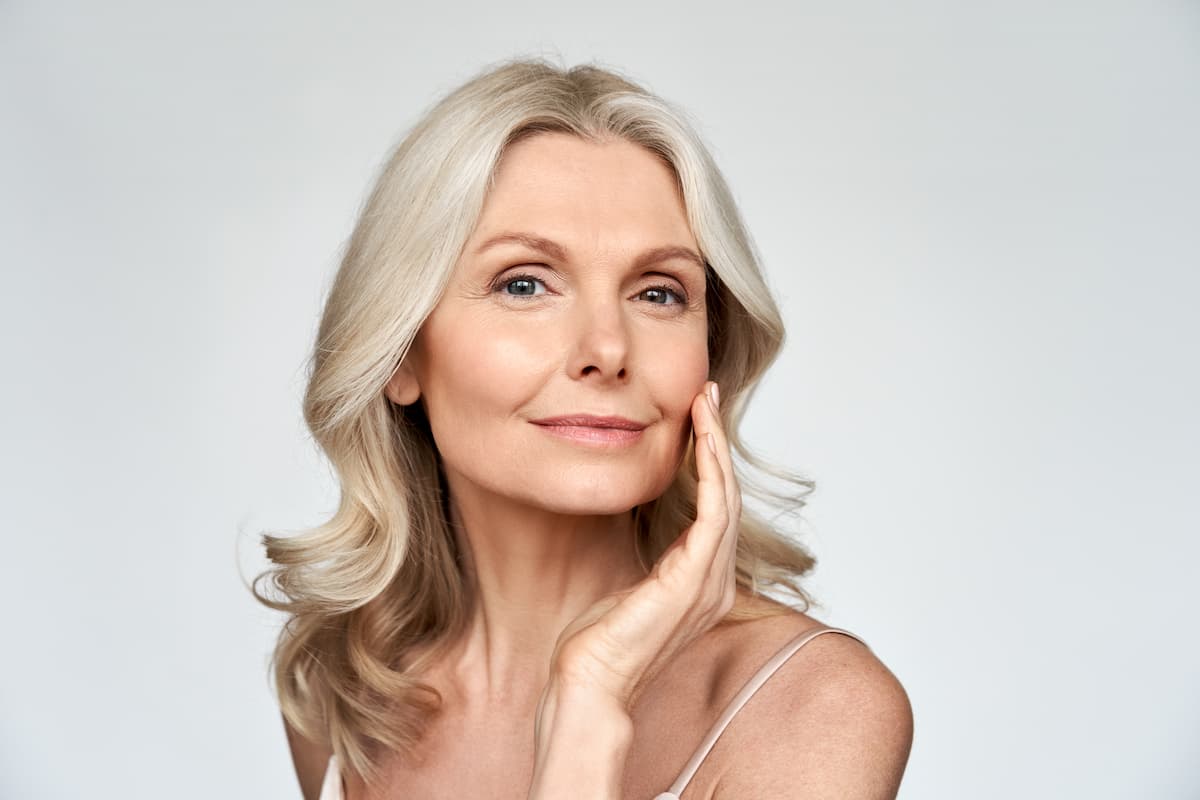
See how to stop the passing of time. That is, the best ways to get rid of wrinkles.
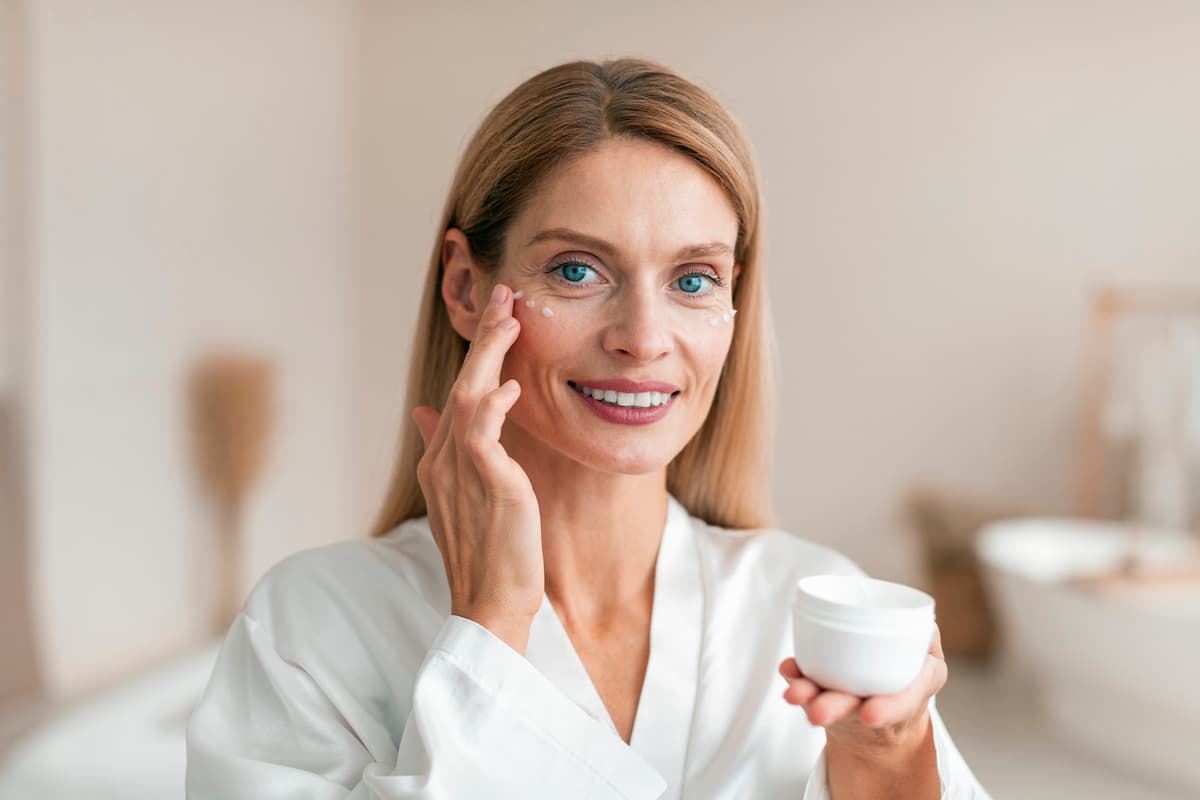
Read about effective methods to combat wrinkles around the eyes.
